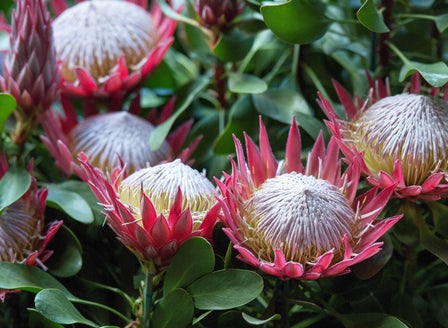Grasses provide structure, shape, movement and texture to our gardens. Grasses come in many shapes, sizes and forms. From dense upright growth to soft delicate arching types that rustle in the breeze. Grass species are hardy and can survive in most environments, that is what makes them so widely used in landscaping.
Planting Calendar
Grasses can be planted throughout the year.
Prepare
Position
There is a grass for almost any position be it in shade, sun, containers or wet areas. Pop into your local Kings Store and ask one of our team members for the right grass for your situation.
Soil
When planted into the ground grasses like a free draining soil that is rich in organic matter. To improve the organic content in your soil, break up the soil and add Kings Compost and Kings Sheep Pellets then mix together well. When growing in containers, plant into Kings Container mix. This mix contains added water storage crystals and Saturaid, two products that help maintain moisture in the soil.
Plant
When planting into the ground, gently tap the plant out of its pot. Dig a hole twice the depth and width of the plants root ball. Mix Kings Compost into your existing soil at a 50/50 ratio, add Sheep Pellets and Novatec fertiliser, then mix together well. Back fill the hole with this soil, so that when planted the top of the plant’s roots sit level with the surrounding ground. Firm the soil down gently and water in well with Aquaticus Organic Garden Booster. In heavier clay soils, where drainage is likely to be an issue, plant onto a raised mound and sprinkle Gypsum Clay Breaker into the bottom of the hole, this helps slowly condition the soil and help to break down the clay. When planting into containers plant into Kings Containers mix, as this has water retention crystals in it, which will help in keeping the soil moist. Firm the soil down gently and water in well with Aquaticus Organic Garden Booster.
Care
Watering
Watering is essential especially in the first year of planting to allow the roots to get well established. Water slowly allowing the water to sink down into the roots, rather than allowing it to run off the top of the surface. Add Saturaid into the soil at planting as this will help channel the water deep down into the root zone. Consider setting up an automatic watering system – these can be simple and inexpensive.
Feeding
Liquid feed every month with Aquaticus Garden Booster, from Spring through to the end of Autumn, this encourages root growth and a healthy immune system. Monthly applications of Kings Sheep Pellets will help with soil conditioning and plant health.
Protecting
Rust can be a problem on some species of grass. Talk to one of our team at your local branch for advice on which product to use.
Mulching
Mulch around the base of the plants (making sure it is not in direct contact with the trunk or base of the plants) with Living Earth More than Mulch. Mulching helps to reduce weeds as well as aiding the soil to lock moisture in the ground.
Pruning
Pruning is only required to trim away and old seed heads or brown blades of grass.
General Care
When using sprays, chemicals or fertilisers always read the label and follow the instructions. Apply sprays in the evening to avoid harming beneficial insects.
Beginner Tip
Planted on masse grasses are a sight to behold, creating a grassland appearance.
Expert Tip
Has your grass become unruly and messy, cut it back to around 5cm above the ground. This will encourage new fresh growth.
Top Varieties
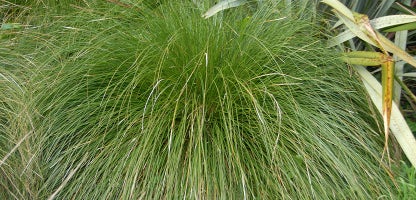
Carex secta
Fast growing and green this Carex likes a position where the soil is moist and can also be grown in wetlands. Growing to 1m x 1m.
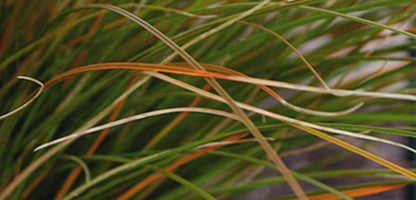
Carex Testacea
This variety can handle colder positions and forms a arching rounded shape. Leaves are green-coppery brown with shades of orange in winter. It grows .60 x .50 and makes a great specimen for mass planting.
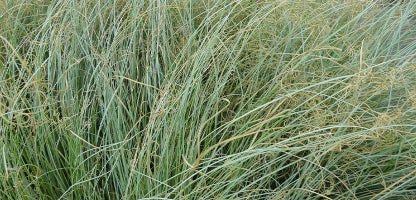
Carex frosted curls
This variety is a little cutie, as its name suggests the leaves are a mint green which have curls at the end. Great for containers and smaller gardens growing to .40 x .50.
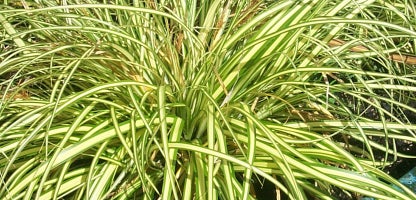
Carex evergold
Evergold has narrow arching cream/yellow leaves with dark green edges. When grown in shaded areas the colour will intensify. Fantastic when grown as a border or in pots. 20 x 20.
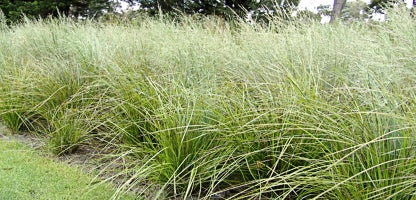
Lomandra “tanika”
This is a tough grass that can tolerate wind, dryness, cold and even coastal conditions. Best suited to fun sun it will tolerate some light shade. Growing to 1m x 1m it is also suited to growing in containers.
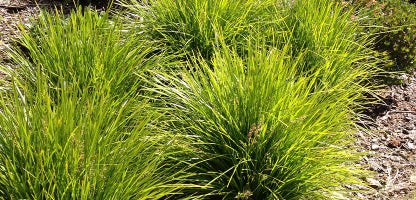
Lomandra “lime tuff”
Compact and upright this Lomandra is great for containers and borders, The foliage stays a nice green all year round. Growing .60 x .60.
Frequently Asked Questions
How often should I water my grass in Auckland?
Watering is essential especially in the first year of planting to allow the roots to get well established. Water slowly allowing the water to sink down into the roots, rather than allowing it to run off the top of the surface. Add Saturaid into the soil at planting as this will help channel the water deep down into the root zone. Consider setting up an automatic watering system – these can be simple and inexpensive.
How do I prevent weeds in my lawn?
Regular mowing, proper watering, and fertilisation can help keep your lawn healthy and less susceptible to weeds. You can also use pre-emergent herbicides in early spring to prevent weed seeds from germinating.
How can I repair bare patches in my lawn?
To repair bare patches, remove any dead grass and loosen the soil. Add a layer of topsoil and reseed the area with a suitable grass seed mix. Keep the soil moist until the new grass is established.
How can I improve drainage in my lawn?
Poor drainage can lead to waterlogged soil and unhealthy grass. To improve drainage, aerate the lawn regularly to reduce soil compaction and consider adding sand or organic matter to enhance soil structure.
How do I deal with lawn pests?
Common lawn pests include grass grubs and armyworms. Regularly inspect your lawn for signs of damage and use appropriate pest control methods, such as insecticides or natural predators, to manage infestations.
